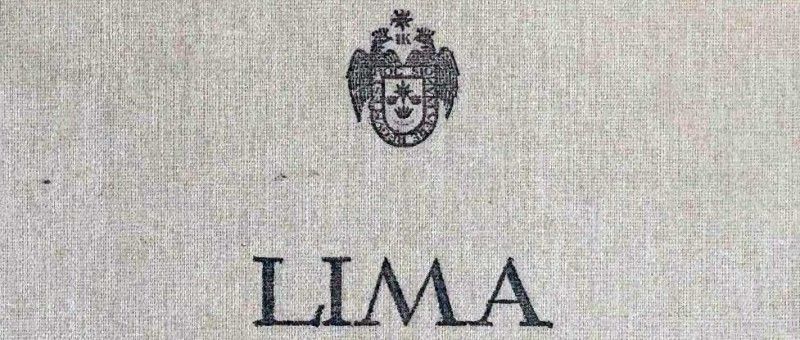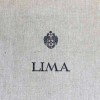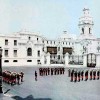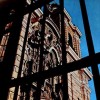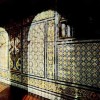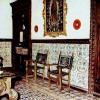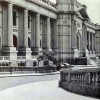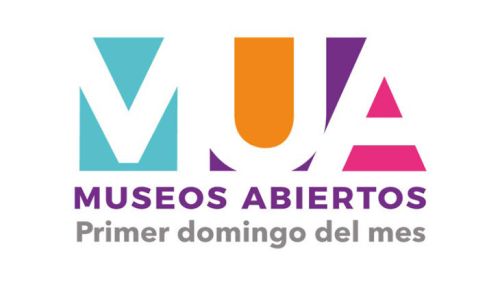The “Corporación de Turismo del Perú” book published in 1947 can be considered one of the first officially distributed picture city guides / tourist guides for Lima.
The publication only features a brief description of the history, certain architectural facts, weather, and general development on 3 pages in Spanish and a translation of the same content in 3 English pages (by Héctor Velarde). The remaining pages of the 96 in total contain color and black-white pictures that seemed important in the mid-forties (by Miguel Benavides).
Extract of the content:
Lima the thrice crowned “City of the Kings”, once the center of the Viceroyalty of Peru, which today is one of Latin-America’s most progressive Capital Cities, still maintains, intensely, all the charm and interest of the towns which are nurtured in history and abound in artistic monuments.
When Francisco Pizarro founded Lima in A.D. 1535 the place had only a humble Indian village, but the plentiful clayey ruins of its “huacas” (artificial hills built of adobe bricks) and the vicinity of the holy city of Pachacamac, showed that the zone must have had an enormous importance in pre-Columbian times.
...
Because of its temperate climate, without sudden changes nor rainfalls, its desertic, loamy landscape and also due to its first inhabitants mostly coming from Extremadura, Lima took on from its very beginning the features of a moslem town. The construction of large adobe walls, plain and colorful, had three outside luxurious features: the ample, lordly, gates; windows with beautiful grilles; and carved wooden balconies as suspended and protruding galleries. These balconies are unique in the Americas and were patterned after the moucharabies of Cairo, Damascus and Aleppo. Singly or aligned in long rows, these old balconies are one of the most picturesque characteristic traits of Lima’s oldest streets. But the City’s architectural wealth did not consist precisely in the ancient thick-walled mansions but in the innumerable churches and convents.
Lima reached its zenith during the 17th and 18th centuries, buildings for public worship multiplied and acquired their highest rank; its population was estimated at around forty thousand inhabitants, and more than six thousand luxurious caleches roamed the streets which, during processions and on the solemn arrivals of the Viceroys, were covered with silver bars and flowers. The churches, convents and old mansions still reflect today, notwithstanding the many ravages caused by earthquakes and restorations, and fires and lootings, all the features of a bygone era.
...
French architecture arrived through Spain to Lima in the 17th century, furnished the churches and houses with a broader charm from the naivete and freshness with which it was interpreted not only by half-bred stonemasons, but also because it was created in soft, plastic building materials such as clay and plaster which are easily adapted to any fancy.
...
To day, large functional buildings arise each day in large numbers, giving Lima its growing and progressive aspect, amidst its eternal, central atmosphere of a historic City.
Index of the pictures:
(1) Plaza de Armas - Main Square (2) Cathedral Basilica (3) Choir of the Cathedral Basilica (4) Change of guard at the House of Government (5) Reception Hall in the House of Government (6) Francisco Pizarro, Peru's First Governor (7) Horse Guards of the President of the Republic (8) Church of Our Lady of Ransom (9) Church of Saint Augustin (10) Detail of Real Felipe Fortress (11) Detail of the inner fountain. Convent of Saint Augustin (12) Close-up of the facade of Torre Tagle Palace (13) Detail of the main courtyard of Torre Tagle Palace (14) Principal court of Torre Tagle Palace (15) Carriage of the Counts of Casa Velarde (16) San Francisco Church (17) Detail of the main cloister of the San Francisco Convent (18) Church and Convent of San Francisco (19) Detail of the gateway of Saint Augustin's Church (20) Altar of St. Francis Xavier in St. Peter's Church (21) Detail of the Altar of Saint Francis Xavier in St. Peter's (22) Interior detail of Saint Peter's Church (23) Doorway of the “House of Pilate” of the Marquises of Valle Umbroso (24) Court of the “House of Pilate” of the Marquises of Valle Umbroso (25) Exterior view of Lima's Bullring - Plaza de Toros de Acho (26) Bullfighter's entrance parade (27) Natural cape pass to the left (28) Wall tiles in the main cloister of Convent of San Francisco, dated 1620 (29) Image of “our Lord of Miracles” (30) Country House of the Counts of Presa, so called Perricholi's House (31) Main entranceway to the Manse of the Lords of Aliaga (32) Relics of Saint Rose of Lima, Isabel Flores de Oliva (33-34) Details of Capitular Hall in San Francisco's Convent (35) Wilson Avenue (36) Carved ceiling of the Tribunal of the Inquisition of Lima, at present Library of the Senate of the Republic (37) Detail of a drawing-room in the Mansion of the Lords of Aliaga (38) Residential museum of the Prado-Heudebert family (39) Interior of the residential museum of the Prado-Heudebert family (40-41) Catacombs in San Francisco's Church (42) Statue of The Protector, Jose de San Martin (43) Courthouse Building (44) Monument of Jorge Chavez, Hero of Peruvian Aviation (45) Monument of Admiral Miguel Grau, Hero of the Peruvian Navy (46) Detail of one of the towers of the Cathedral Basilica and one of the balconies of the Cardenal's Palace (47) First floor corridor in the Palace of the Marquises of Torre Tagle (48) Altar in the residential Museum of the de Osma family (49) Detail of the Cardinal's Palace (50) Archeological and Anthropological Museum (51-52) Partial views of Pachacamac ruins (53) Partial view of the residential museum of the de Osma family (54) “Las Trece Monedas” (Thirteen Coins) Restaurant (55-56) Archeological and Anthropological Museum (57) Pre-Hispanic ceramic in the Archeological and Anthropological Museum (58-59) Pre-Hispanic golden pieces in the Archeological and Anthropological Museum (60) Pre-Hispanic golden necklace and earrings in the Rafael Larco Herrera Museum (61) Pre-Hispanic golden vase in the Letts de Cohen Museum (62) Pre-Hispanic golden “huaco” in the Miguel Mujica Gallo Museum (63) Sanctuary of Huaillamarca in the San Isidro residential district (64) Ruins of Puruchuco (65) Building of the Ministry for Public Education (66) Architectonic ensemble at Avenida Grau (67) Hall of Congress (68) Pulpit in the Church of Santa Maria at Pueblo Libre (69) Detail of an Altar at the Jesus and Mary Church (70) Detail of the Vestry at the Convent of San Francisco (71) Wilson Avenue (72) “La Herradura” beach and bathing resort (73) Coffee-Shop at Miraflores (74) Bathing resort – Chorrillos (75) Ornamental detail at Paseo de la Republica (76-77) “Los Incas” Golf Club (78) Santa Maria Beach (79) Santa Rosa Beach (80) Bay and beach at Ancon (81) “Los Condores” Country Club (82) Monterrico Hippodrome (83) Detail of the Oquendo Mansion, also known as Osambela Mansion.


